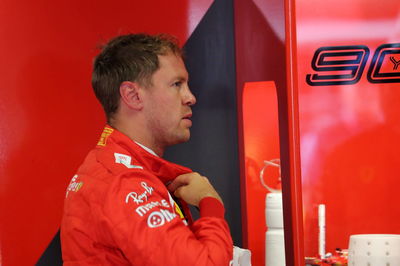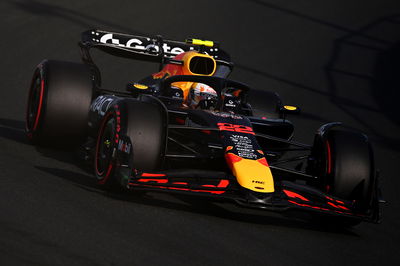F1 Qualifying Analysis: How the Monza shambles unfolded
It’s all a bit dull really. Grid penalties; stewards’ summons; blah blah blah. It’s all red tape that serves to detract from much of Formula 1’s lustre and allure.
Alas, such red tape is necessary to keep things in check, even if it means we have days like this where, over four hours after qualifying finished, we’re still unsure how the final grid will shape up tomorrow.
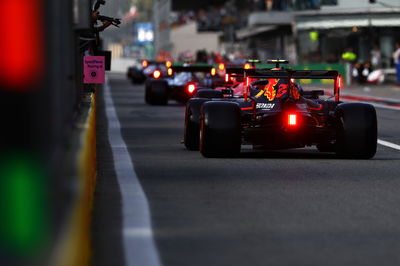
It’s all a bit dull really. Grid penalties; stewards’ summons; blah blah blah. It’s all red tape that serves to detract from much of Formula 1’s lustre and allure.
Alas, such red tape is necessary to keep things in check, even if it means we have days like this where, over four hours after qualifying finished, we’re still unsure how the final grid will shape up tomorrow.
The shambles that unfolded at the end of qualifying for the Italian Grand Prix was predictable. We got a taste for it at Spa, when drivers kept running slowly and backing the field up through the final sector so they could gain track position and, with it, an all-important tow for the long straights.
At Monza, the tow is all the more powerful, given it is mainly straights with a few corners to keep it all tied together. Drivers were therefore even more mindful about going out at the right time – only for them all to settle on the very same idea, dig in their heels, and all lose out as a result.
The sign of how bad this could end up being came in Formula 3 qualifying on Friday evening. A similar situation unfolded with drivers running extremely slowly down the back straight toward Parabolica, all unwilling to be at the head of the queue and give the cars behind a tow. The session was red flagged as the stewards considered it to have become too dangerous.
An astonishing 19 grid penalties were dished out through the 30-car field. Renault junior Christian Lundgaard took pole before receiving a three-place grid penalty, but still kept pole because of penalties applied to other drivers.
The FIA moved to avoid a repeat in F1 qualifying by issuing a bulletin to teams in the lead-up to the session that stated the minimum delta time all drivers were required to hit, which was equivalent to the speed behind the Safety Car. In principle, it would work fine; in reality, giving the drivers a minimum speed doesn’t work if they’re all on the same patch of track at the same time.
“The reality is no-one wanted to be first, because you give everyone else a tow and not yourself, so you bleed a couple of tenths,” explained Renault’s Daniel Ricciardo after the session.
“You’ve got a clear track, and maybe you can make up a little bit in the corners, but I think it’s more knowing that you’re helping everyone else as well. I guess no-one wanted to be that guy.
“I think the games started already in the first run in Q3 when some cars were already going through the escape road. I think that started encouraging a few games.”
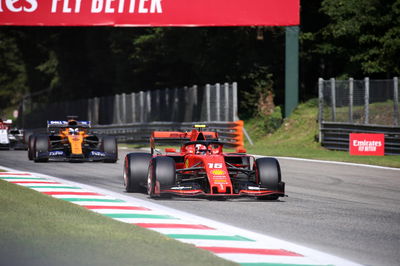
Mercedes pulled its clever ploy from Baku of getting Lewis Hamilton and Valtteri Bottas to complete practice starts at pit exit early in Q1, causing them to drop back down the order. A number of drivers, including Ricciardo’s teammate, Nico Hulkenberg, and the Ferrari pair of Sebastian Vettel and Charles Leclerc all conveniently went off at Turn 1. Hulkenberg was pulled up on it by the stewards, but avoided any penalty after claiming he was so focused on the cars ahead, he didn’t realise he had left it too late to turn in and make the corner...
And thus we were left with the farcical situation where nine of the world’s finest racing drivers, allegedly racing in the pinnacle of motorsport, were crawling at slow speeds around the track, all unwilling to be the man at the front of the train. It was only at the last moment when the clock began to move into the single-digits as they came into Parabolica that it was evident they would miss the line. Carlos Sainz and Charles Leclerc both made it through; the rest did not. In Alexander Albon and Lance Stroll’s case, it meant neither set a time at all in Q3.
“Everyone was slowing right down and blocking the way, so you couldn’t really get through,” explained Lewis Hamilton. “It was pretty dangerous. I almost crashed a couple of times, trying to stay out of the way and guys braking ahead of me, and people coming past me. It would have been nice to be able to compete on that last lap, get to really thrash out the cars and see who really had the edge at the end. Unfortunately we all timed out.
“I’m not really sure how we can get around this, everyone brake-testing and slowing down to let others past just to get the tow. I wish I just went out earlier, went out there and did a clean lap.”
The importance of getting a tow at Monza has not changed since last year – so why has the issue been so much worse in 2019 than before?
Ricciardo felt it may have something to with the regulation changes, designed to help the racing and make it easier to follow other cars.
“Maybe, maybe, maybe,” he began, cautiously, “the little aero tweaks they made this year, maybe it means we can follow a little bit closer. Maybe that meant that we could be closer to a tow, and that tow was more crucial here. Maybe.
“You could kind of be around two seconds behind another car and just get a gain without any loss. Maybe you kind of needed a few more seconds last year. From memory that’s maybe a bit of a difference. Otherwise, I don’t know. It was weird.”
While the issue may be most notable at tracks where the tow is crucial to a good lap like Spa and Monza, Hamilton was doubtful that it would not return at many of the other circuits left to come this season.
“I’m sure it’s going to continue,” Hamilton said. “If everyone is going out late, as we just did there for example, two minutes to go, there is going to be an issue, in places where you particularly need a tow. It won’t be until someone crashes that they’ll change it, most likely.”
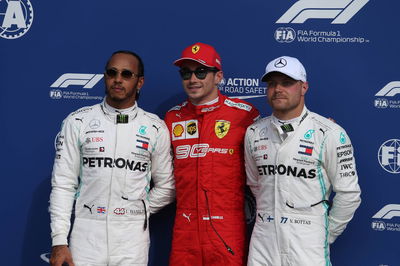
So what will the solution be? That is one question none of the drivers had a firm answer to. Pole-sitter Charles Leclerc and third-placed man Valtteri Bottas both warned against a possible change in qualifying format based off these two races; Hamilton said it was “unlikely” any format change would be considered, despite his wishes for them to shake things up.
Does qualifying need changing? Do we need to bring back some of the one-lap jeopardy seen in series such as Formula E that remove such farcical situations, as well as making drivers pay the price for errors? Or are we dealing with two extreme cases right now that will all be forgotten about by the time we get to Singapore in two weeks?
The drivers paid the price for their own stubbornness today. It was shambolic. In some ways, hilarious. But there is a serious safety issue that needs to be considered moving forward.
“I think for now I think we can chuckle about it, and there were no incidents, so it was fine and whatever,” Ricciardo said, having also joked that the drivers were simply giving fans what they wanted by spicing things up.
“But it does need to be addressed at the next driver meeting because no-one really gained anything from it. When you’ve got that many cars in a pack, you are maybe more likely to clip wheels with someone or lose a nose or whatever.
“We don’t need it. We’ll address it, but immediately speaking, I think we can move on from it.”
